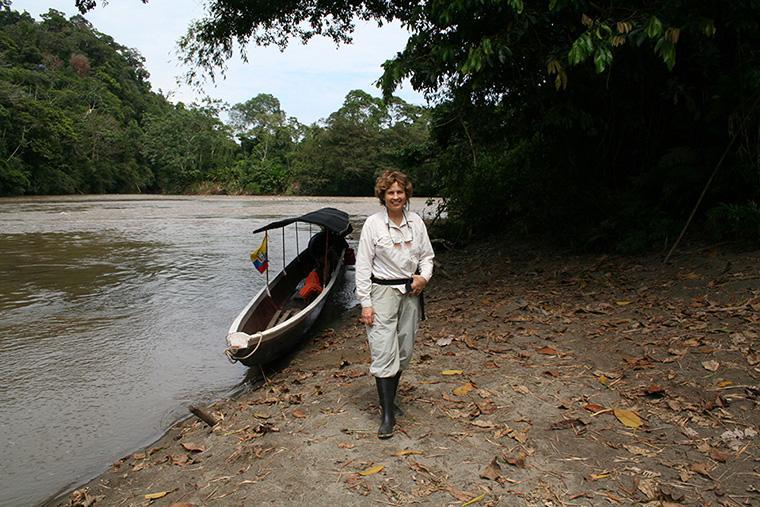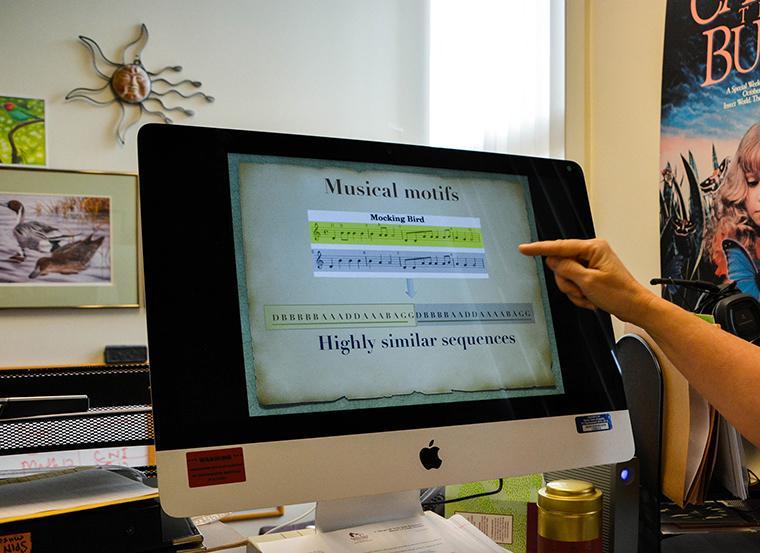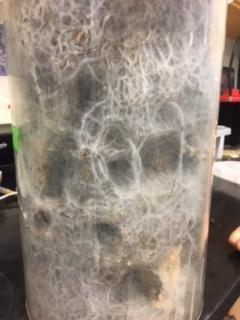
Silk Spinning is Music to her Ears

You might say she’s caught in a web. Michael and Elizabeth Valeriote Professor of Biology Janice Edgerly-Rooks, who teaches courses in ecology, entomology, behavior, and biodiversity, has spent much of her life studying insect-spinning behavior. Her research has taken her far and wide and even caught the eye of filmmaker David Attenborough, who utilized her work for “The Silk Spinners,” an episode of the 2005 mini-series, “Life in the Undergrowth.”
Today, Professor Edgerly-Rooks has added a new dimension to her data analysis: music. An avid singer, she was inspired by her involvement with a symphony to see if musical notes would help her see patterns in the data she was collecting.
Instead of common silk spinners such as the spider and caterpillar, Edgerly-Rooks was investigating the patterns of a rarer and thinner kind of silk spun by webspinners, also known as embiids. While spiders store their silk in their abdomen, an embiid is unique in its ability to store and spin silk with its front feet. Silk from an embiid is only 45-100 nanometers in diameter -- roughly 60 times thinner than the silk of a spider. To study this material, Edgerly-Rooks’ research team uses an electron microscope, which utilizes a beam of electrons as means of gathering an image. The embiid silk sample is placed in the vacuum chamber of the microscope and is magnified until only one strand is visible. Finding a strand that is nanometers small could take several minutes to several hours. Getting the insects to spin in a way that could be utilized took much trial and error by Edgerly-Rooks and her student research team.

Edgerly-Rooks wondered whether the complexity of an embiid’s silk domiciles correlates with how social it is. To see if there were patterns in silk spinning behavior exhibited by different embiid species, she assigned each spin step to a musical note. The notes would then be played in sequence according to the order of the spin steps that the embiid uses to create a silk structure. Using musical notes as means of finding a pattern, Edgerly-Rooks can probe the question as to whether embiid's of the same taxonomic family spin their silk with similar choreography.
While her research took her into the world of music, it has also led to creative collaborations with other fields, such as physics and chemistry. SCU physicist Richard Barber, for example, learned about Edgerly-Rooks’ research through mutual students. Barber and his students are focused on the silk itself, particularly on how it interacts with water. Similarly, Grace Stokes, a chemistry professor at SCU, has also been helping Edgerly-Rooks with spectroscopy, the study of the relationship between matter and electromagnetic radiation.

Cross–departmental research such as this opens up opportunities for intellectual and personal growth. This unique collaboration allows SCU researchers to think beyond their realm of scientific focus, which can inspire future areas of study. Edgerly-Rooks describes her research as a process of discovery, and notes that science, in general, comes from having an interest in the world. She wants her students to be able to understand the diversity in nature and, more importantly, to gain a more holistic view of the biological world.